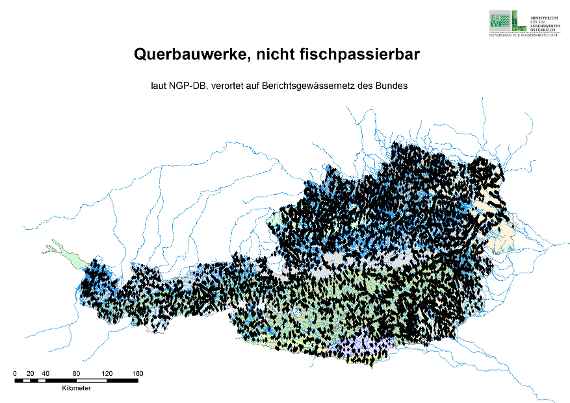The watercourses in Austria encompass a total length of about 43,000 km; all with a catchment area of more than 10 km² are subject to reporting, according to the Water Framework Directive, i.e. almost 33,000 km.
The Austrian Water Law Act and associated regulations determines monitoring of water bodies, the use of the assessment scheme Fish Index Austria and features for implementation. The National Water Management Plans (NGP) - created in a six year interval - defines the timetable for the implementation of measures and thus for the achievement of objectives. Stressors acting on waters in Austria are mainly hydro-morphological alteration.
This means that the continuum of the water bodies is interrupted, ending up in fragmented streams and rivers. Currently there are more than 33,000 fish-barrier to migration occurring, which is on average one obstacle per kilometre of flow. Also morphological and hydrological quality has been considerably altered in many cases.
Fishes with their specific life cycles respond sensitively to these changes and are therefore the most important indicator to determine ecological status of water bodies. The Department of Water Ecology has therefore developed an evaluation method the Fish Index Austria (FIA). FIA was recorded in national regulation.
Monitoring under standardised methodology started in 2007 and up to now surveys were conducted at more than 2200 sampling sites with a much higher number of sampling occasions. In order to record, process and evaluate the data centrally for all over Austria, the Institute set up a fish database, the Fish Database Austria (FDA).
The Department of Water Ecology is involved in the preparation of guidelines, is responsible for the quality assurance of the fish monitoring program in most federal states and is represented in national and international committees.

